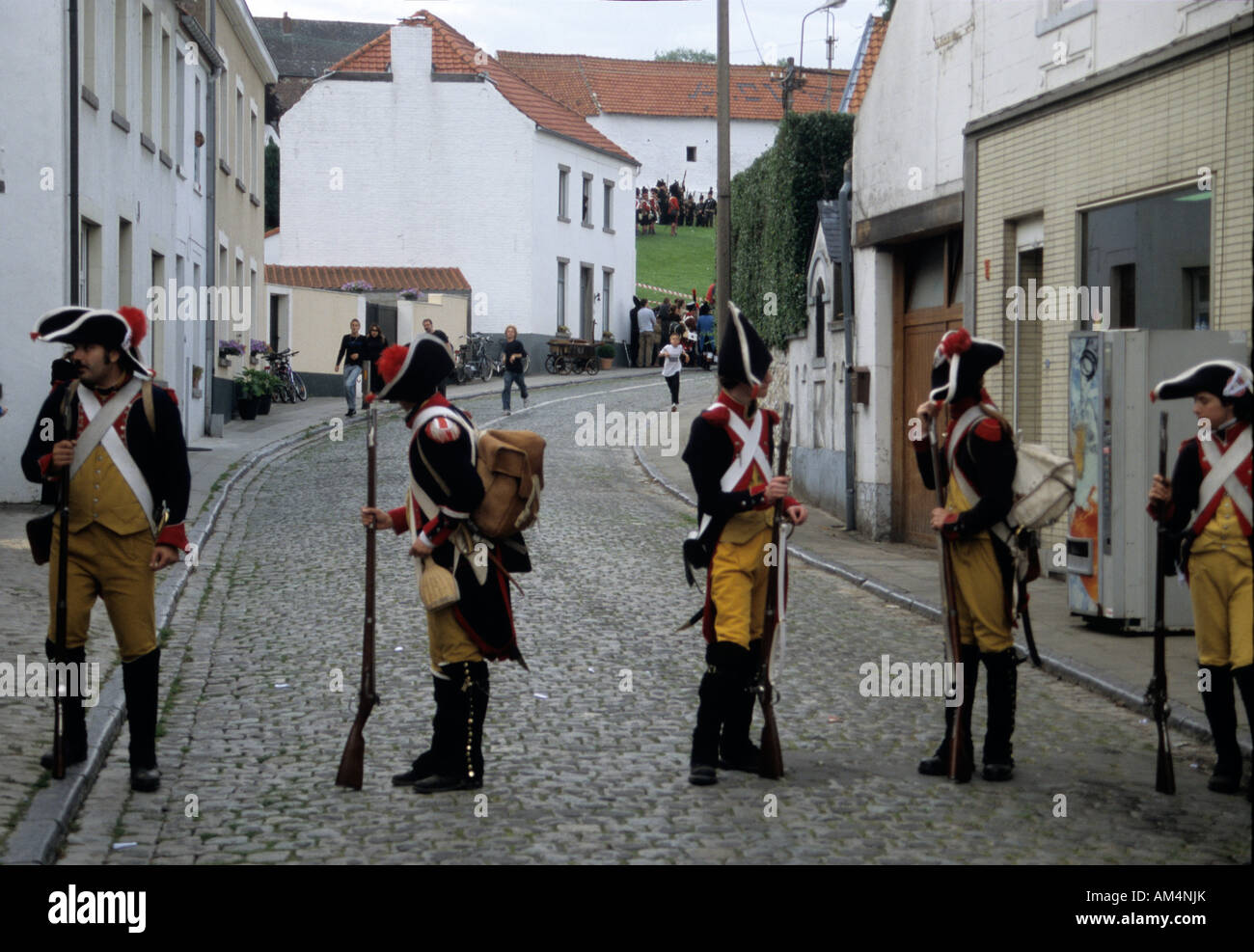Re-enaction of the battle of Waterloo in Plancenoit, Belgium

Image details
Contributor:
Nick Haslam / Alamy Stock PhotoImage ID:
AM4NJKFile size:
54.1 MB (2.4 MB Compressed download)Releases:
Model - no | Property - noDo I need a release?Dimensions:
5232 x 3612 px | 44.3 x 30.6 cm | 17.4 x 12 inches | 300dpiMore information:
The Battle of Waterloo, fought on 18 June 1815, was Napoleon Bonaparte's last battle. His defeat put a final end to his rule as Emperor of the French. Waterloo also marked the end of the period known as the Hundred Days. After Napoleon returned to power, many states which had previously resisted his rule formed the Seventh Coalition and began to mobilise armies to oppose him. The first two armies to assemble, close to the French north eastern border, were a Prussian army under the command of Gebhard von Blücher and an Anglo-allied army under the command of the Duke of Wellington. Napoleon chose to attack them in the hope of destroying them before they, with other members of the Seventh Coalition (who were not such an immediate threat), could join in a coordinated invasion of France. The campaign consisted of four major battles - Quatre Bras (16 June), Ligny (16 June), Waterloo (18 June), and Wavre (18 June-19 June) - with Waterloo proving decisive. It rained heavily overnight on 17 June, so Napoleon delayed giving battle until noon on 18 June to allow the ground to dry out. Wellington's army positioned across the Brussels road on the Mont St Jean escarpment withstood repeated attacks by the French until in the evening they counter-attacked and drove the French from the field. Simultaneously the Prussians — arriving in force — broke through Napoleon's right flank adding their weight to the attack. Losses were heavy on all sides. The French army left the battlefield in disorder, and was unable to prevent Coalition forces entering France and restoring King Louis XVIII to the French throne. Napoleon was exiled to Saint Helena, where he died in 1821. The battlefield is in present-day Belgium, about 12 kilometres (7.5 mi) SSE of Brussels, and 2 kilometres (1.2 mi) from the town of Waterloo.